In a time of increasing urbanisation and with growing awareness of more sustainable lifestyles, space is a luxury that comes at a premium. Nevertheless, no matter how limited the square footage of our homes may be, we yearn for at least a small glimpse of nature in the urban jungle. When it comes to designing a tiny green refuge in the city, who better to ask than a landscaper who specialises in designing gardens for townhouses and rooftops – and who has even greened “a clearing in the streets” in New York City?
If, like garden designer Julie Farris, you can create a garden there, you can do it anywhere! Find out how, with her 5 top tips for making any small garden an outdoor oasis:
1. Make Your Small Garden A Multitasking Space Wonder
“A garden should be flexible, and it should work on two levels: the sensorial and the practical. A small garden can have multiple functions, and its focus or functionality can change drastically from day to evening, season to season, over the course of the year – or a lifetime. I am drawn to elegant, classic and enduring design solutions that are also practical. If a garden is well-designed, all you’ll notice is its beauty.”
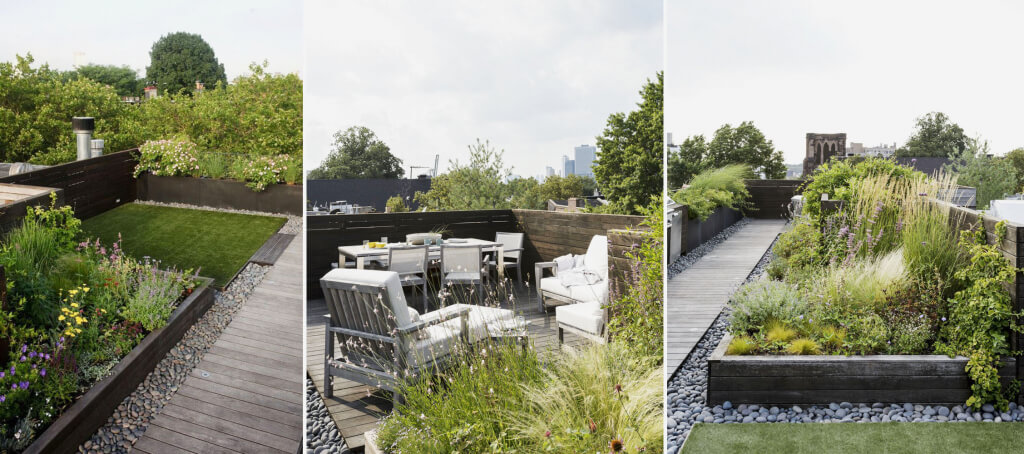
2. Lead The Eye In A Space Surrounded By Man-Made Structures
“Most of the gardens I create are surrounded by people and tall buildings. I have learned that no amount of planting can completely screen out city life, or make you forget about it, but gardens have their own inherent theatricality. For me, designing them is kind of like choreographing a story: I like to shape the narrative by thinking about what you want to see and feel as you move through the space. I find simplicity in a chaotic urban environment very soothing, so that’s what I aim for – a garden framework that’s defined and minimal, that will highlight the garden’s beautiful elements.
“You can definitely make a city garden feel wild. But ‘feel’ is the operative word here, because most of the combinations of plants that look wild and fantastic together in a garden take more work and investment than most people realise. Instead, I like to design gardens with strongly defined and bold architectural structures, which allow the plants to go wild (rather than be wild), but also keep the garden organised in a small space.”
3. Create Harmony For A Unified Aesthetic
“All the elements of a garden should harmonise – too many strong colours, too many bold shapes, too many varying textures can be overwhelming. But don’t think of it in terms of the size of your garden limiting your choices. Instead, I like to think in terms of ‘editing’, which is enormously useful, especially at the outset of a project. It’s easier than you think, and you don’t need to worry about regretting your edits; the good news is that a garden is alive, which means you can always layer on with colour and textures and shapes over time.
“In terms of choosing a palette, I tend towards neutrals for the overall structure and let the plants add the colour. For surfaces, I always go for natural materials such as wood, limestone, bluestone, granite and gravel. These materials might cost a bit more upfront, but they look and weather better than synthetic options, so the price is worth it in the end. For décor, I love stone, teak, steel and mesh.”
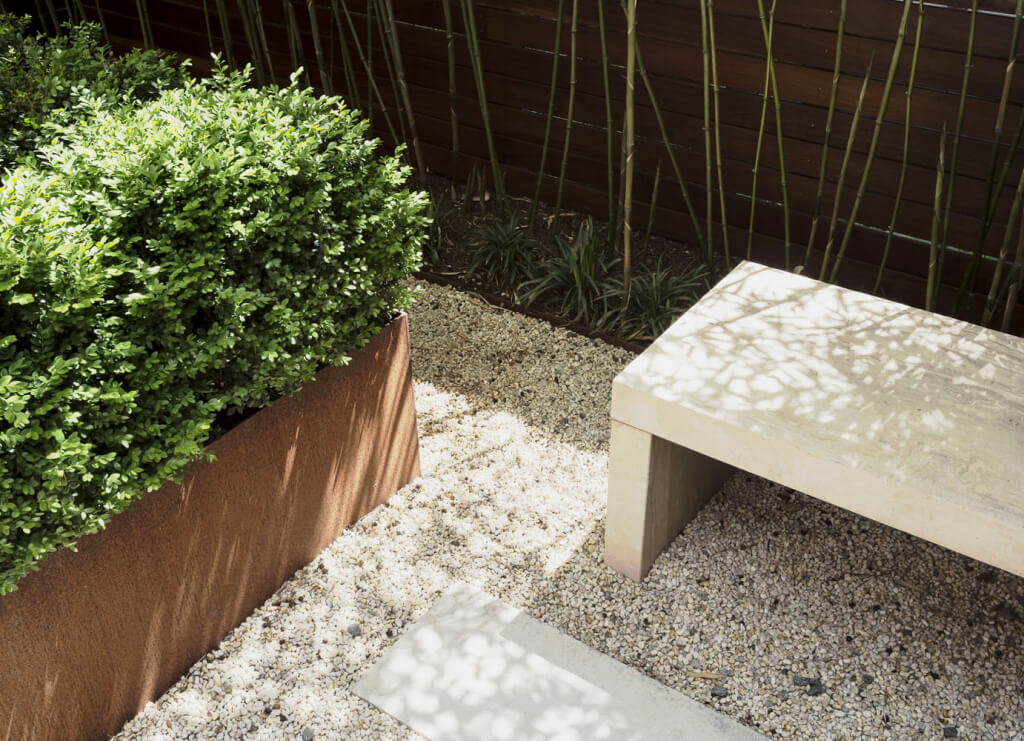
4. Work With The Space You Have – And The Natural Surroundings
“A small garden should be easy to maintain, so I always try to design in ways that will impose the least amount of work over time. That way, your appreciation for your garden will grow alongside it.
“Every garden site has existing characteristics that help define it, and also help you decide what’s important to you, both aesthetically and practically. For example, it’s great to consider what plants already thrive naturally in your area. Look for plants that are hardy and that will do well in the specific site for which they’re intended. I love grasses and use them whenever I can. Maybe there’s a tree that can serve as the focal point of your garden. Maybe there’s a view from your garden that you’d like to highlight. Use all those things to guide your ‘edits’.”
5. Perfect Your Proportions
“Small gardens can be tricky in terms of proportion and scale. A lot of little elements in a small garden can make it look fussy and messy; if the elements are too large, the space can feel claustrophobic. And I know this sounds elementary, but I have to remind myself all the time: Plants grow! Some a lot more than others. The best thing you can do before planting a garden (apart from choosing a native plant palette) is research the size and spacing of the tree or plants you are considering. A wrong-sized planting can throw a whole garden off.
“When it comes to choosing furniture that will fit the scale of a small garden, I sometimes use tape to mark a patio or deck, to make sure the layout works before I buy. I’ve learned the hard way that this method helps avert any purchase disaster you might have in your future.” #staysafe #stayathome #selfisolation
For more inspiration, head to the portfolio of Julie Farris’ garden designs at XS Space and browse Landstylist, her online sourcebook for outdoor design.

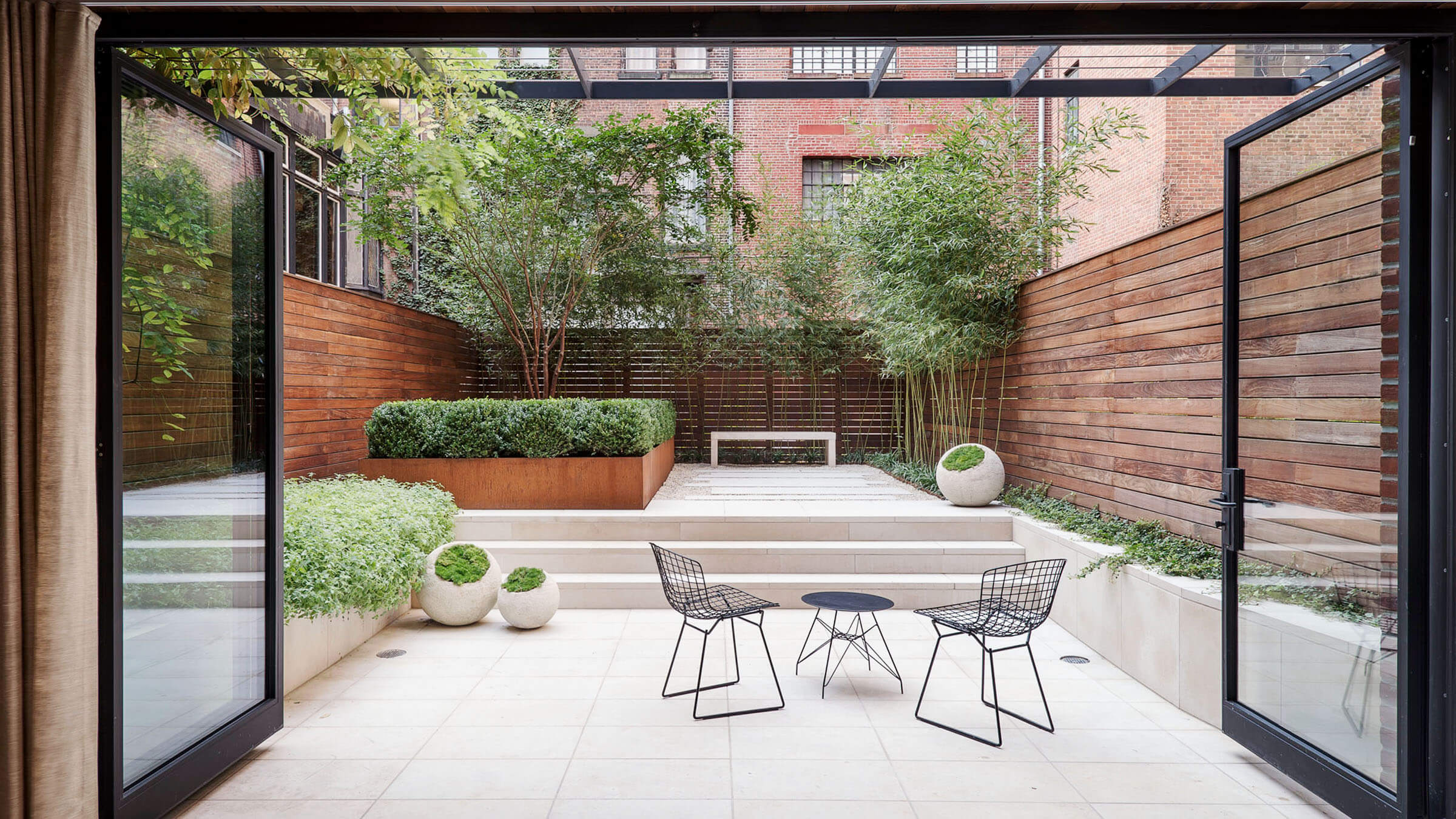

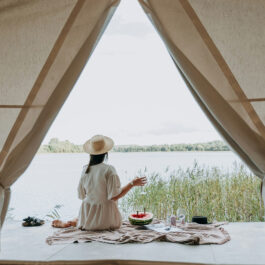






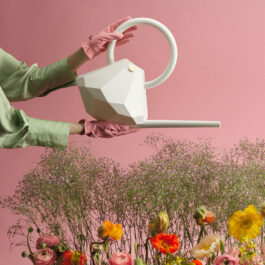



Sorry, the comment form is closed at this time.